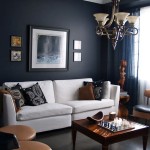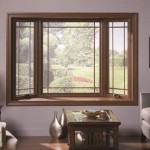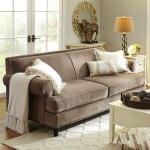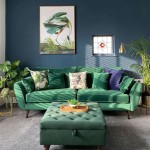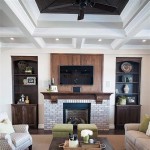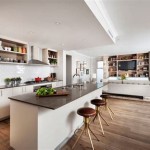Small Living Room Ideas For Small Spaces
Creating a stylish and functional living room in a small space presents a unique set of challenges. Maximizing every square inch becomes paramount, requiring thoughtful planning and strategic design choices. It's not just about fitting furniture; it's about creating an environment that feels open, inviting, and serves the needs of the occupants.
Effective small living room design hinges on understanding the limitations of the space and turning them into opportunities. Prioritizing functionality, optimizing natural light, and employing clever storage solutions are crucial elements. The goal is to create an illusion of spaciousness while maintaining comfort and reflecting personal style. This article will explore key design principles and practical ideas for transforming a cramped living room into a welcoming and efficient heart of the home.
Strategic Furniture Selection and Placement
The selection of furniture is perhaps the most critical aspect of small living room design. Overly large or bulky pieces can quickly overwhelm the space, making it feel cramped and uncomfortable. Opting for furniture that is appropriately scaled to the room's dimensions is essential. This includes considering the height, width, and depth of sofas, chairs, tables, and other elements.
Multi-functional furniture is a particularly valuable asset in small living rooms. A sofa bed, for instance, provides seating during the day and can be converted into a guest bed at night, eliminating the need for a separate guest room. Similarly, ottomans with built-in storage can serve as footrests, coffee tables, and storage containers, maximizing utility without sacrificing space. Coffee tables with lift-top mechanisms offer additional storage space and can be raised to create a comfortable surface for dining or working.
Wall-mounted furniture is another effective strategy for saving floor space. Floating shelves, cabinets, and even media consoles can create a visual lightness and free up valuable floor area. This allows for easier movement around the room and contributes to a more open and airy feel. When selecting furniture, consider pieces with exposed legs. The visible space beneath the furniture creates an illusion of greater openness compared to pieces that sit directly on the floor.
Furniture placement is just as crucial as the selection process. Avoid pushing all furniture against the walls, as this can actually make the room feel smaller and more boxy. Instead, consider creating distinct zones within the living room. An area rug can help define a seating area, while strategically placed lighting can highlight different parts of the room. In smaller spaces, angling furniture can create a more dynamic and visually interesting layout. A well-placed mirror can reflect light and create the illusion of depth, making the room feel larger than it actually is. It is also beneficial to consider the flow of traffic through the room. Ensure that there is ample space to move comfortably between furniture pieces and around the room.
Maximizing Natural Light and Employing Clever Lighting Techniques
Natural light is a valuable asset in any living room, but it is particularly important in small spaces. Ample natural light can make a room feel brighter, more open, and more inviting. To maximize natural light, avoid blocking windows with heavy curtains or furniture. Opt for sheer curtains or blinds that allow light to filter through while still providing privacy.
Mirrors are a powerful tool for reflecting light and creating the illusion of spaciousness. Placing a large mirror on a wall opposite a window can effectively double the amount of light in the room. Mirrors can also be used to create the illusion of depth, making the room feel longer or wider than it actually is. Strategic placement of mirrors is key to maximizing their impact. Experiment with different positions and angles to find the optimal placement for reflecting light and enhancing the sense of space.
In addition to maximizing natural light, it is important to employ clever lighting techniques. A combination of ambient, task, and accent lighting can create a well-lit and visually appealing space. Ambient lighting provides overall illumination, while task lighting is used for specific activities such as reading or working. Accent lighting highlights particular features of the room, such as artwork or architectural details.
Recessed lighting is a good option for providing ambient lighting without taking up valuable floor space. Table lamps and floor lamps can provide both task and accent lighting, but it is important to choose lamps that are appropriately sized for the room. Overly large lamps can overwhelm the space, while too-small lamps may not provide sufficient light. Wall sconces are another space-saving option for providing ambient or accent lighting. These can be particularly useful in areas where floor space is limited. Dimmer switches are a valuable addition to any lighting scheme, allowing you to adjust the brightness of the lights to suit your needs and create different moods.
Consider the color temperature of your light bulbs. Warmer light temperatures (around 2700K) create a cozy and inviting atmosphere, while cooler light temperatures (around 5000K) are more energizing and can make a room feel brighter. The best choice will depend on your personal preferences and the overall style of your living room.
Vertical Space and Creative Storage Solutions
In a small living room, it is crucial to utilize vertical space effectively. Walls are often underutilized, and can be transformed into valuable storage areas. Tall bookshelves, wall-mounted cabinets, and floating shelves can provide ample storage without taking up valuable floor space. When selecting storage solutions, consider the style of your living room and choose pieces that complement the overall aesthetic.
Shelving is a versatile storage solution that can be used to display books, decorative objects, and other items. Open shelving can create a visually appealing display, while closed shelving can provide more discreet storage. A combination of open and closed shelving can be a good option for balancing aesthetics and functionality. Consider using baskets or bins on shelves to organize smaller items and prevent clutter. Floating shelves are a particularly good option for small living rooms, as they create a clean and minimalist look and free up floor space. These can be placed at varying heights to add visual interest and create a dynamic display.
Think vertically when choosing your media console or entertainment center. Opt for tall, narrow units that provide ample storage without taking up too much floor space. Corner units can be a good option for maximizing space in awkward corners. Consider incorporating storage into your coffee table or ottoman. Ottomans with lift-up lids or built-in drawers are a great way to store blankets, pillows, or other items. Coffee tables with shelves underneath can provide additional storage space for books, magazines, or remote controls.
Consider using wall-mounted organizers for storing smaller items such as mail, keys, or accessories. These organizers can be placed near the entrance to the living room to create a convenient drop-off point. Hooks can be used to hang coats, hats, or bags, freeing up closet space. Over-the-door organizers can be a good option for storing shoes or other items in a small closet. When choosing storage solutions, prioritize functionality and choose pieces that are easy to use and maintain. A well-organized living room will feel more spacious and comfortable, even if it is small.
Consider repurposing items for storage. An old ladder can be used as a unique bookshelf, or vintage suitcases can be stacked to create a stylish storage unit. Thinking outside the box can lead to creative and personalized storage solutions that add character to your living room.
By carefully considering furniture selection, lighting techniques, and storage solutions, it is possible to transform a small living room into a stylish, functional, and inviting space. Prioritizing functionality, maximizing natural light, and employing clever storage solutions are key to creating an illusion of spaciousness without sacrificing comfort or personal style.

Small Living Room Ideas Decorating

The Secrets To Maximizing A Small Living Room Space Decor Tips
:strip_icc()/cdn.cliqueinc.com__cache__posts__191613__small-living-room-ideas-191613-1526001981902-main.700x0c-ab3bbf79e5664b22b0a1973abcd3a11f.jpg?strip=all)
35 Designer Approved Small Living Room Ideas

Small Living Room Ideas For Big Impact Sweeten Com

Small Living Room Decorating Ideas For A Stylish Space

This Living Room Makeover Gave A Nurse Her Own Zen Space

Small Living Room Ideas How To Design At The Best Use Of Space Décor Aid

Small Space Living Rooms Town Country
:max_bytes(150000):strip_icc()/236608877_287634333162970_6363336183903051726_n-63ab3e1976184317bdc51527a780339c.jpg?strip=all)
46 Small Living Room Ideas To Maximize Space And Style

51 Inspiring Small Living Rooms Using All Available Space

